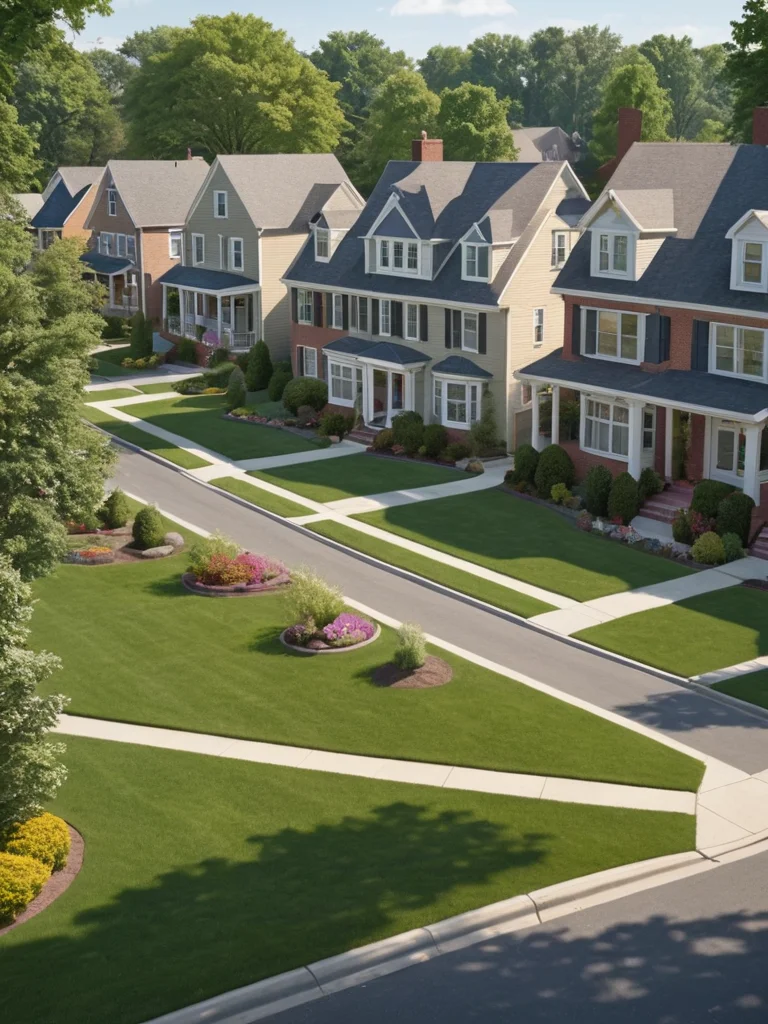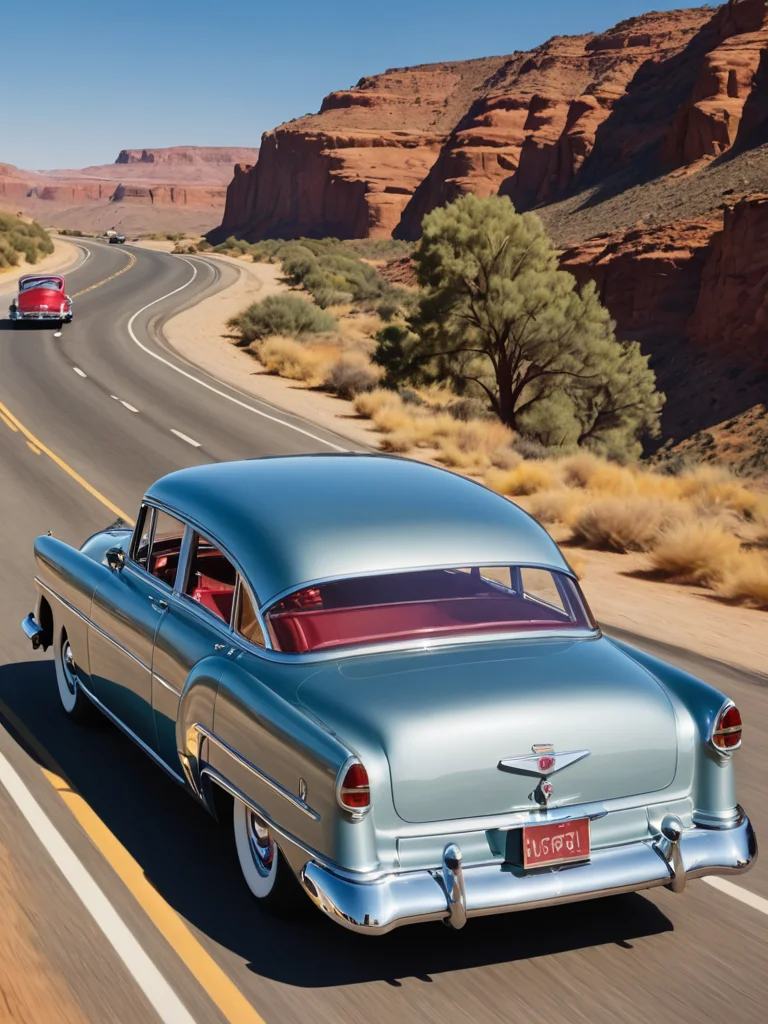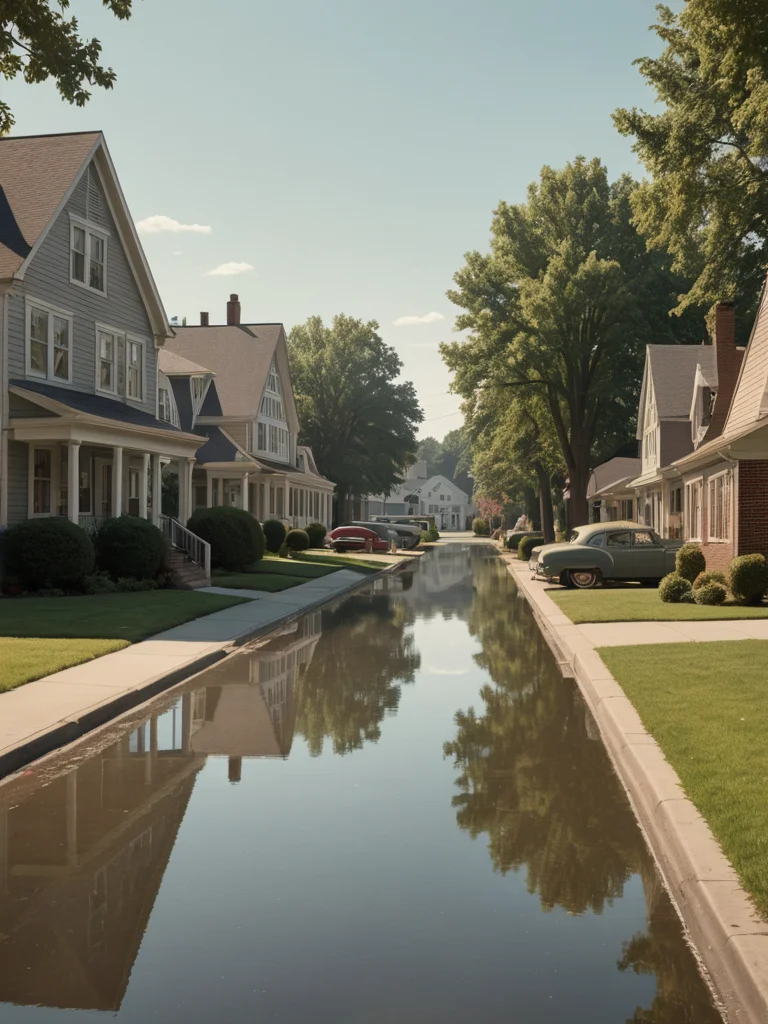After the turbulent years of World War II, the United States of America entered a decade that to this day remains a symbol of prosperity, stability, and specific ideals. The 1950s are not just another period in history; they are an entire era that gave birth to what later became known as the “American Dream of the 1950s.” But what did this dream entail? Essentially, it was the embodiment of the pursuit of well-being, accessible to every diligent citizen. It was an ideal life where every family had its own home in a quiet suburb, a gleaming car in the garage, and several healthy, happy children running on a manicured lawn. Historians note that this dream was deeply rooted in post-war optimism and economic growth, as the country, having avoided the devastation that befell Europe, experienced unprecedented economic prosperity.
Imagine an America ready to forget the hardships of war and the Great Depression, striving for peace and prosperity. It was in the 1950s that the image of the ideal family, the “Joneses,” with their impeccable home, neat manners, and clearly defined roles, was formed. This was an era when America’s middle class was not just growing; it was thriving, providing millions of families with access to previously unimaginable benefits. Televisions became an integral part of every home, supermarkets were filled with an abundance of goods, and new roads connected cities and suburbs, making car travel a part of everyday life. This period still fascinates us with its apparent simplicity and utopianism, offering a model society where everyone strived for the same thing, achieving stability and prosperity in the process. However, like any idyll, the “American Dream” of the 1950s had its nuances and hidden complexities, which we will discuss in more detail.
The Era of Suburbs: How Owning a Home Outside the City Changed America?

One of the cornerstones of the “American Dream” of the 1950s was undoubtedly homeownership. But not just any home, a home in the suburbs. After World War II, millions of returning veterans, thanks to the “GI Bill,” gained access to preferential loans for housing and education. This triggered a housing construction boom and a mass exodus of the population from overcrowded and often dilapidated urban centers to new, purpose-built communities. One of the most famous examples of such construction was the emergence of Levittowns – standardized housing developments where homes were built with incredible speed using an assembly-line principle.
What attracted Americans to the suburbs? First and foremost, it was the promise of safety, fresh air, large yards for children, and a sense of community. Statistics from that time show an exponential increase in the number of homeowners. If before the war, a significant portion of the population lived in rented housing in cities, then by the end of the 1950s, most middle-class families already owned their homes. These homes, often modest in size but functional, symbolized stability and success. They were equipped with all the conveniences: a modern kitchen, one or two bathrooms, a spacious living room. It is important to note that this lifestyle also implied a new level of consumption: furnishing a new home required furniture, appliances, lawnmowers, and, of course, cars to get to work and shops.
However, the mass migration to the suburbs also had profound social consequences. It contributed to the homogenization of society: most suburban residents were middle-class white individuals, which, unfortunately, was often accompanied by racial segregation. Many sales contracts contained clauses prohibiting the sale of real estate to non-white individuals. This led to an increase in social and racial inequality, creating a kind of “white ghetto” in the suburbs and leaving ethnic minorities in old, dilapidated urban areas. Furthermore, suburban life dictated certain gender roles: men typically worked in the city, while women stayed at home, raising children and managing the household. This led to the formation of the ideal housewife, whose primary goal was to maintain the family hearth and create a cozy atmosphere.
The economic aspect was also significant. The development of suburbs stimulated the flourishing of many industries: from construction and building materials production to the furniture industry and household appliances. New jobs were created, and the overall standard of living rose. The emergence of large shopping centers (malls) near suburban areas changed consumption habits, making shopping more accessible and enjoyable. Thus, the suburb became not just a geographical location but also the center of a new American identity, a symbol of prosperity and stability, but also a testament to some of the social limitations and prejudices of the era.
The Chrome Symbol of the Era: Why Did the Big Car Become an Icon of the 50s?

If the suburban home was the heart of the “American Dream” of the 1950s, then the car was its driving force and brightest symbol. In post-war America, the automobile ceased to be just a means of transportation; it became a true work of art, a status symbol, a reflection of the owner’s individuality, and a crucial part of everyday life. The automotive industry, having switched from military production, experienced an unprecedented boom, releasing models that still evoke nostalgia and admiration.
Imagine these cars: huge, shiny, with curved lines, abundant chrome, often two-tone paint jobs, and, of course, the famous “tailfins,” which became longer and more elegant towards the end of the decade. These tailfins, inspired by jet planes, symbolized speed, progress, and futuristic aspirations. Cadillac, Chevrolet Bel Air, Ford Fairlane – these names sounded like music, and their models were the dream of every American family. The large size of the cars was not accidental: it reflected the idea of space and comfort necessary for family trips and travel on new, developing highways. Americans loved their cars not only for their beauty but also for their functionality: they allowed for comfortable travel between suburban homes, city jobs, and new shopping centers.
The importance of the automobile in the 1950s is hard to overestimate. It became a central element of cultural life. The emergence of roadside diners, drive-in movie theaters, and motels was a direct consequence of the widespread adoption of cars. The highway culture flourished, offering new forms of entertainment and recreation. Young people used cars for dates and meetings, turning them into a kind of mobile “living room.” Adults could afford long trips during vacations, which was previously accessible only to a few. The car provided unprecedented freedom of movement and the opportunity to explore the country.
Economically, the automotive industry was the locomotive of the entire American economy. Car production required a huge amount of steel, rubber, glass, and other materials, stimulating the development of related industries. Automobile factories provided jobs for millions of people, and dealerships and service stations appeared across the country. Buying a new car every few years became commonplace for many middle-class families, fueling constant demand. Despite the obvious drawbacks of large, gas-guzzling cars today (high fuel consumption, parking problems in growing cities), these factors were perceived differently in the 1950s. Gasoline was cheap, and environmental problems were not yet as acute. Thus, the large, chrome car became not just a means of transportation but a true embodiment of status, progress, and the unstoppable American dream of boundless freedom and prosperity.
The Wave of Life: How the Baby Boom Reshaped American Society and Culture?
The third, and no less significant, pillar of the “American Dream” of the 1950s was an unprecedented demographic phenomenon known as the “baby boom.” Immediately after the end of World War II, from 1946 to 1964, the US experienced an explosive increase in birth rates. Millions of veterans returned home, started families, and felt confident in an economically stable environment, which led to a significant increase in the number of births. Historians and demographers note that the number of children born during this period exceeded all previous and subsequent figures, having a colossal impact on all aspects of American society.
The consequences of the baby boom were felt everywhere. The first and most obvious was the emergence of a huge new generation, which became known as the “baby boomers.” This required a significant expansion of infrastructure. New schools, kindergartens, and hospitals were built. Suburban areas, which we discussed earlier, were ideal for families with children, offering a safe space for their growth and development. The demand for teachers, doctors, and pediatricians grew exponentially. The production of baby goods – from diapers and strollers to toys and baby food – experienced a golden age. Companies quickly adapted to the new market, offering a wide range of products tailored to the needs of young families.
The social structure also underwent changes. A large family with several children became the norm and the ideal. The image of an “ideal family” of four or five people, living in a cozy suburban home, was broadcast through television, magazines, and advertising campaigns. This led to the strengthening of traditional family values and roles, where the father was the breadwinner, and the mother was the keeper of the hearth, dedicating herself entirely to raising children. At the same time, the increased population required the creation of more jobs, which spurred economic growth and the development of new industries.
The cultural impact of the baby boom was also immense. It was this generation, upon reaching adolescence in the 1960s, that would become the driving force of the counterculture, rock and roll, and social movements. Their numbers and collective experience shaped a unique identity that would later be interpreted and reinterpreted in many ways. In the 1950s, however, they were primarily the object of care and investment from society. Programs to improve children’s health, develop education, and create conditions for their prosperous upbringing were a priority. Thus, the baby boom did not just increase the population; it shaped a new generation that would define the future of America for decades to come, becoming both a driving force of economic prosperity and a source of future social and cultural shifts.
The Legacy of the Dream: What Remains of the Ideals of the 50s and What Was Their Real Price?

The “American Dream” of the 1950s undoubtedly left a deep mark on the history of the USA and world culture. This era became a symbol of unprecedented prosperity, the formation of a powerful middle class, and the creation of a society focused on family and stability. What remains of those ideals today, and what was their real price?
On the one hand, the legacy of the 1950s includes the development of infrastructure that still serves America today: the highway network, suburban areas with their standardized housing, the foundations of mass consumption, and modern retail. The ideal of owning a home in the suburbs remains attractive to many Americans, although its affordability has changed significantly. The economic boom of those years laid the foundation for further growth and the dominance of the US on the world stage. The formation of a numerous and economically powerful middle class was one of the key achievements, ensuring social stability and well-being for millions of citizens.
However, like any idealized picture, the “American Dream” of the 1950s had its dark side and a high price. First and foremost, it was not accessible to everyone. Racial segregation, which we mentioned, was widespread, and Black people, as well as other minorities, were systematically excluded from this dream. They were denied mortgage loans and the purchase of homes in “white” suburbs, which exacerbated economic and social inequality. Women, although they played a central role in maintaining the family hearth, often faced limitations in career advancement and public life; their role was reduced solely to that of a housewife and mother. This led to the emergence of certain social tensions that would explode in the following decades.
Another important aspect is the rise of conformity and the suppression of individuality. The society of the 1950s valued uniformity and adherence to generally accepted norms. Deviations from established ideals, whether in clothing, music, or life goals, were often perceived negatively. This conformity, while contributing to social stability, also generated a sense of alienation and dissatisfaction among those who did not fit the mold. Excessive consumption, which underpinned economic prosperity, also led to the formation of a society focused on material goods, which, according to critics, could lead to the loss of deeper values.
Modern historians continue to analyze this decade, acknowledging its achievements while also pointing out its shortcomings. The “American Dream” of the 1950s was a powerful symbol of optimism and opportunity that shaped the nation’s image. However, it was also a complex phenomenon, containing both the seeds of future prosperity and the seeds of future social changes and conflicts. Understanding this era allows us to better appreciate how modern America was formed and how the ideals of the past continue to influence the present.
